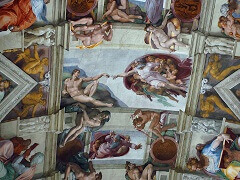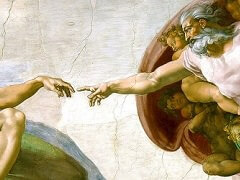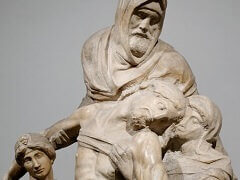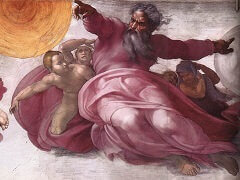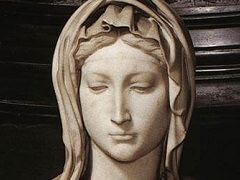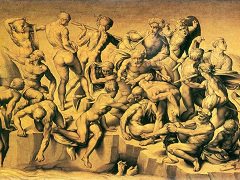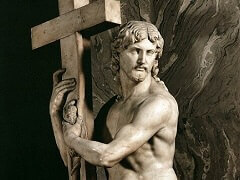Pitti Tondo, by Michelangelo
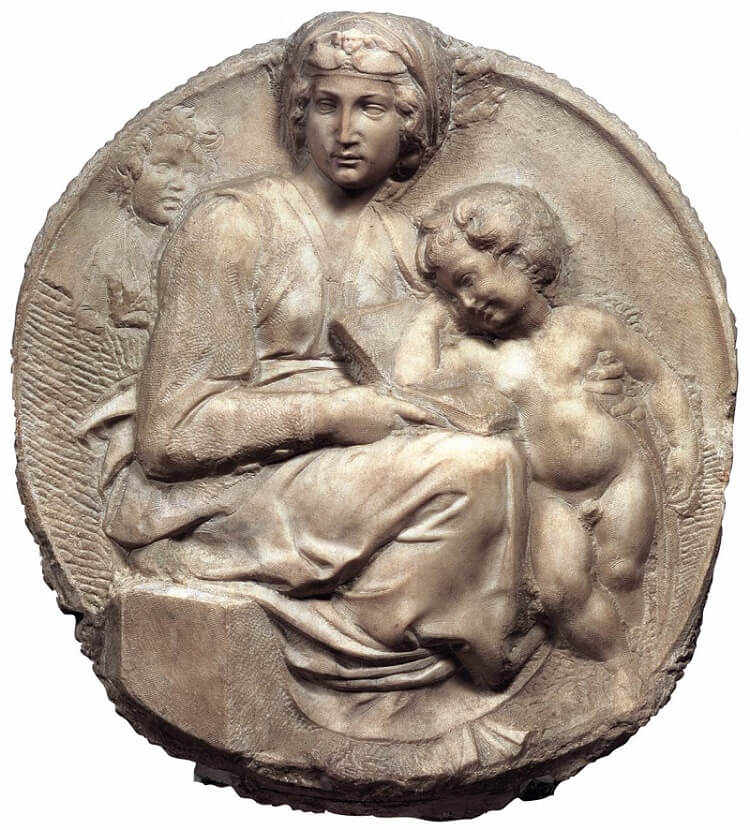
The Pitti Tondo profile of the marble disc reveals marked irregularities, particularly in the lower portion: in the upper portion, a raised lip hints at a frame effect, which is, however, interrupted in the middle by a high-relief made up of the Madonna's head. The veiled head, turned to the viewer's left, protrudes and turns simultaneously on the Madonna's neck, as she sits on a low parallelepiped (perhaps the cornerstone of the Mother Church), and takes up the central portion of the space. Right up close to her low-seated figure, between her rightward pointing knees, the Child leans up against the open book; both Mother and Child have stopped reading as if to lend their ears, in a moment of prescient and melancholy concentration, to the Infant Saint John, who nestles in the very small amount of space just behind the Madonna.
Generally speaking, the iconographic motif for an interpretation of the work pertains to the theme a very popular one in Florentine artistic tradition - of the Child's early training in the scriptures. But in Michelangelo's version the peacefulness of the domestic scene is upset by a number of omens: the Madonna's absorbed and tense face, whose gift of prescient knowledge seems to be symbolized by the cherub situated at the front of her hairstyle; the Child's physical exhaustion, abandoned to a drowsiness anticipating his death; the effusion of his mother's cloak, which, as a part of it lies between his hand and cheek, and between his torso and Mary's hand, suggests the subtle and merciful protection of the sudarium. The composite garments worn by Mary, which consist in a robe with close-knit folds and a broad bordered overgarment, and the luxuriant locks of hair crossing the brow indicate similarities with the much more finished Madonna of Bruges, while, her full face with very regular features resembles that of Saint Gregory the Great in Siena.


